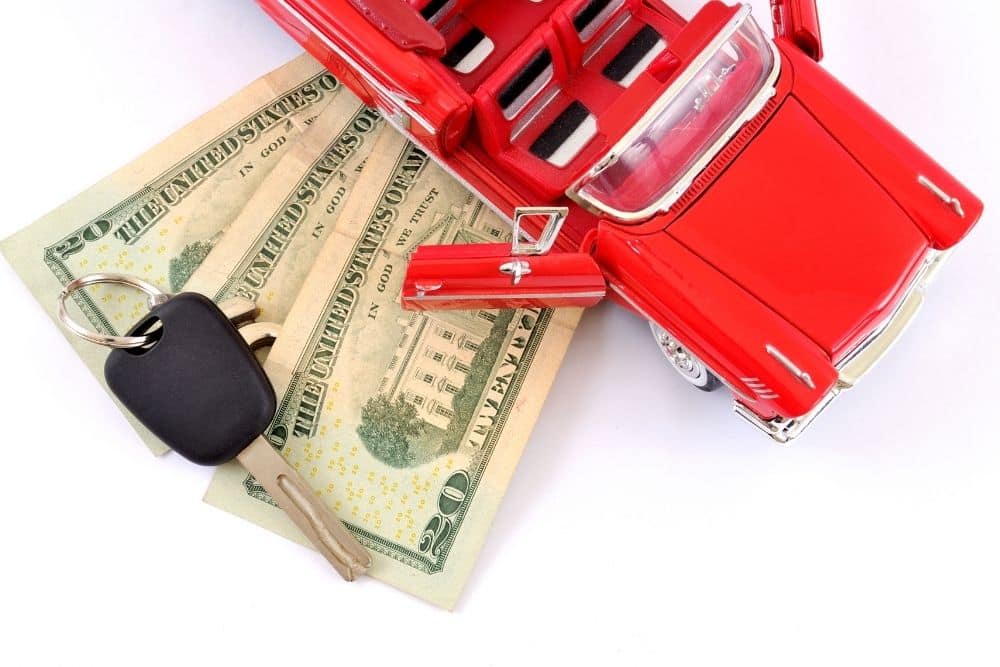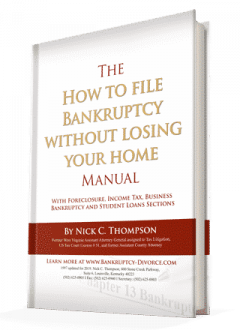Debtors often have problems with their cars in bankruptcy. First, if you have negative equity if you owe more than the auto is worth. Then, if you have negative equity in your auto you are often able to cram down your car in Chapter 13 to make it more affordable. So, essentially you pay back what the car is worth in Chapter 13 and bankrupt the balance of the car loan as an unsecured debt if the debt is over 910 days old.
You can also do a cramdown if it is a refinance loan or a business loan. However, cramming down a car is only possible with Chapter 13. Additionally, Chapter 13 often reduces the interest rate to about 1% over what banks pay for their money. We invite you to continue reading to learn more about Chapter 13 auto cramdown vs Chapter 7 redemption.
Chapter 13 Auto Cramdown vs Chapter 7 Car Redemption
⎆ The problem of negative equity in an auto.
In Chapter 7, redemption is a similar process where you pay the retail value of the auto and bankrupt the balance as an unsecured debt. Essentially you buy the auto for what the current retail value which releases the lien. However, you can only “cramdown” or “redeem” personal property.
Interestingly, redeeming, modifying, or cramming down first residential mortgages is not possible in Chapter 7 or 13. You can, however, value and strip commercial mortgages, vacation home mortgages, or a second mortgage that has no equity in Chapter 13.
⎆ Surrender, reaffirm, ride through, and redeem.
There are choices you must make about your car when you file a Chapter 7 or 13 with a secured creditor.
- If the car is horrible you can surrender it and owe nothing. Creditors may not even pick up the vehicle or they may wait until the end of the case. They can pay a filing fee of about $300 and an attorney fee of about $750 and file a motion to terminate the stay to pick it up immediately. They normally are better off waiting until after the case. If the auto is junk and they don’t pick it up you can file an affidavit of incomplete transfer to ensure it gets out of your name and you don’t pay taxes on it.
- If you reaffirm the on-time payments are reported to the credit bureau. However, you must be able to afford the loan to get court approval of a reaffirmation agreement. You go back to being liable for the debt. If you plan to refinance your home later you must reaffirm.
- Ride Through. If you cant reaffirm because on paper you can’t afford the auto you can simply make the payments and keep the auto. However, your payments may not be reported unless you reaffirm.
- The final choice is to redeem the auto if you have a lot of negative equity
⎆ Redemption in Chapter 7.
A redemption purchases the auto for the retail value of the auto. Normally this is done in a single payment. The statute requires a single payment but a creditor can agree or may fail to object to it being paid back in 2-3 payments over 30-60 days. Chapter 7 only lasts 3-4 months. Redemption can be forced on a creditor. A reaffirmation is an agreement with a creditor and voluntary.
722 redemption is a company that will finance an auto purchase from the lender. You might even be able to negotiate a price lower than retail with some lenders. You can also purchase a different vehicle from Budget, Toyota of Louisville, or 722 while you are in Chapter 7 or 13.
Financing a redemption is often at a high-interest rate of 21%. Financing a new purchase during Chapter 7 runs about 15%. Purchasing an auto six months to one year after discharge currently runs about 6-9% after your credit hits about 620. Currently, the interest rate for a person with a 650 is about 6%. But often a high-interest rate is a lot less costly than paying the full amount if you have negative equity.
⎆ How to qualify for a Chapter 13 cramdown.
A cramdown separates the debt into two parts. The secured portion of the debt is for what the car is worth and you must repay this is full. The unsecured portion is repaid with the other unsecured claims. If you complete the plan you save on what you would have paid for the car. But you must complete the plan to get the bargain of the cramdown.
A more complete explanation of stripping judgment liens tax liens and second mortgages in Chapter 13 is here. Chapter 13 tends to work like a debt consolidation loan where priority and secured debts are paid first. Unsecured creditors may be paid 100%, 70%, 10%, or less at the end of the plan. Each level of repayment has benefits and costs.
To cram down a car in Chapter 13 you must be aware of the following facts:
- The loan for the purchase of a consumer vehicle must be over 910 days old. If the car is refinanced or the vehicle is a commercial vehicle there is no waiting period. Only loans for the purchase of a personal vehicle must wait for 2.5 years ( 910 days) before they can cram down the vehicle.
- The cramdown must pay the lender the retail value of the vehicle. If the car is in poor condition you may be better off letting it go back and buying a different car. This is where if the bank is greedy and insists on the retail value for a car in poor condition. So, sometimes, you are better off getting another one from a local dealer. Additionally, some finance companies allow less than retail but most credit unions don’t.
- You must include the repayment of the auto in your plan.
- Adequate protection is just an accelerated repayment to the car lender to ensure the car does not depreciate faster than it is being paid for in the plan. This normally only means the attorney and unsecured creditors are paid back a little slower through the plan.
⎆ Additional notes for a Chapter 13 cramdown.
You must complete the plan and obtain the discharge before the lien on the car is released. If you don’t complete the plan you return to owing more than the auto is worth and you have often fallen further behind if the plan fails.
You can also often reduce the interest rate on the auto. We sometimes get the interest rate down to 5%–3% and in one case where the lender did not object, we got it down to 0%. Normally it lowers to the prime rate plus one percent.
⎆ Summary Chapter 13 auto cramdown vs Chapter 7 car redemption.
If you owe more than your car or home is worth and want to reduce what you owe be sure to talk with your attorney. Our website and manual are designed to help deserving people who need help. Your feedback is important. Be sure to share the materials on social media and leave us a nice review. Also, if we did a good job, let us know if there is something we can do better.
 Resources for Bankruptcy
Resources for Bankruptcy
Louisville Kentucky Bankruptcy Forms
Other Related Information
Bankruptcy Reaffirmations for Your Property • Video
Bankruptcy Motion 722 Redemption
How to Manage Your Car Loans in Bankruptcy
Chapter 7 Bankruptcy Auto Loan Redemption
Bankruptcy Reaffirmations for Your Property
If you are thinking about filing bankruptcy, don’t delay because timing is crucial. I am here to help you. So, contact my office right away to start the conversation. Nick C. Thompson, Bankruptcy Lawyer: 502-625-0905.


